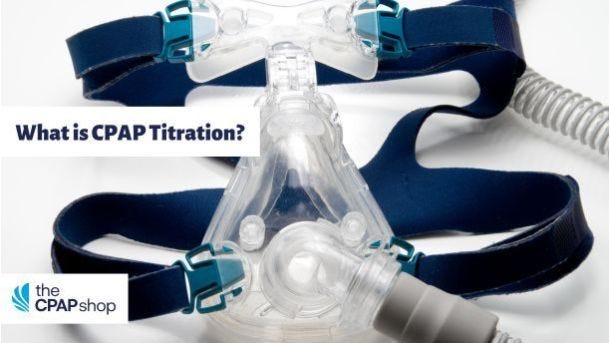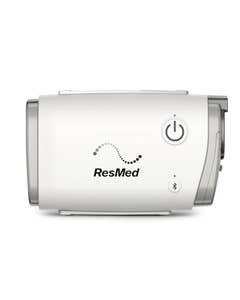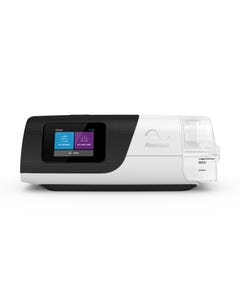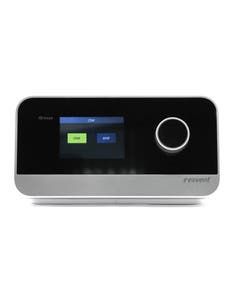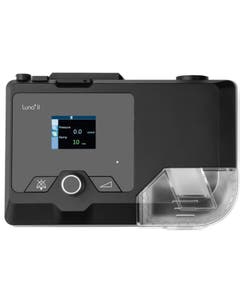What is CPAP Titration?
Apnea events occur at different intervals and levels of severity for every person with OSA. Throughout their lives, CPAP machine users will need to have follow-up titration conducted during their sleep study in order to make adjustments. This is the process of checking and adjusting the air pressure for the patient to ensure that it is optimized to eliminate the apneic events during the night. The time intervals between these pressure adjustments depend on the patient and their circumstances.
Most physicians prefer that their OSA patients have the pressure settings for their CPAP machine checked annually or semi-annually. This is to make sure there are no returning symptoms of sleep apnea. On the other hand, some OSA patients may begin to experience snoring, nighttime awakenings, or daytime headaches. They may also feel sleepy or fatigued and are likely in need of adjustments to their individual pressure settings.
The amount of pressure change needed may not manifest itself in the most obvious ways as those listed earlier. It may be more subtle such as an increased inability to concentrate or lapses in memory. You may also feel increased moodiness or have bouts of depression. All of these symptoms should dissipate with proper CPAP machine settings and compliance. That's why it's a good idea to keep a copy of your sleep study report, titration, and specific symptoms that you encounter before and after therapy. This is a way to track treatment and progress over the lifetime of therapy.
Patients with other conditions such as hypertension, or those having suffered heart attacks or strokes, will require closer monitoring. These conditions can affect their CPAP therapy and require a resetting of pressure. A simple machine pressure change can be the only thing keeping an OSA patient healthy and free of the risk of another heart attack or stroke. Patients that have gained or lost considerable weight may need to have their pressure settings adjusted as well.
While auto-titrating CPAP machines provide data streams that indicate any changes to apneic events, this does not ensure that readjustment is not necessary. Although some insurance providers and Medicaid will require monitoring by physicians for compliance purposes, physicians and sleep therapy specialists may or may not be receiving the downloadable data that can tell them if the pressure is optimized and the CPAP therapy is at its most effective.
That is why every OSA patient must always use their CPAP machine every night for the entire night. They also need to be proactive about monitoring their symptoms and any changes. By staying vigilant and in regular communication with a physician, OSA patients can be sure that the pressure settings of their CPAP machine are working for them so that they can sleep well and stay healthy.
Conclusion
For additional information on various topics concerning sleep apnea and CPAP products, please refer to our blog. It has updates constantly and offers free advice and information. If you’d like to learn more about the products we carry, or have additional questions, call us at (866) 414-9700. Or, you can contact us through our website: https://www.thecpapshop.com/contact-us
The CPAP Shop teamed up with Dr. Vidya Pai, an experienced sleep medicine specialist, to write this blog post. Our team of authors and medical experts frequently evaluates our blog posts so that readers can learn factual information and make knowledge-based decisions. Our blogs get constantly updated with the most accurate information to provide the most up-to-date facts and research.
Overview of CPAP Titration
CPAP Titration is the process of checking and adjusting the air pressure for the patient to ensure that it is optimized to eliminate the apneic events during the night. The time intervals between these pressure adjustments depend on the patient and their circumstances. The goal is to find the lowest pressure possible while still delivering effective treatment.
Apnea events occur at different intervals and levels of severity for every person with OSA. Throughout their lives, CPAP machine users will need to have follow-up titration conducted during their sleep study to make adjustments.
During CPAP titration, a patient will wear a CPAP mask while they are sleeping as different pressures are tested. The titration is long enough to allow a person to sleep in each sleep stage. This approach helps doctors find the best pressure to suit each unique patient. Patients are also asked to switch sleeping positions during the titration so that the number of apneas and their level of severity can be monitored depending on how they sleep, their sleep stages, and other factors.
What to Expect During a CPAP Titration Study
Typically during a CPAP titration, a person will be connected to monitoring tools to help track heart rate, blood oxygen levels, and breathing levels. Additionally, a person could be connected with a CPAP machine as well to track the effects of using one. Several types of CPAP masks may also be tested to determine which is best and most effective when using a CPAP machine. A sleep expert will conduct this test and observe the person undergoing the study the whole time.
How to Prepare for a CPAP Titration Study
Those undergoing a CPAP titration may be asked to prepare for it ahead of time, so it’s important to discuss with your doctor all the necessary things you need to do to be properly prepared.
Here are a few action items to best prepare for the sleep study:
- Avoid caffeine or alcohol for a recommended time frame before the test
- Bring comfortable clothes to sleep in
- Ensure your hair and body are clean/free of lotion
- Take the typical medications you are prescribed, unless told otherwise
Symptoms for Not Checking Your CPAP Machine Pressure
Most physicians prefer that their OSA patients have the pressure settings for their CPAP machine checked annually, or semi-annually, even if there are no returning symptoms of sleep apnea. On the other hand, those OSA patients begin to experience snoring, night-time awakenings, daytime headaches, sleepiness, fatigue, increased inability to concentrate, lapses in memory, increased moodiness, or bouts of depression.
All of these symptoms should be eliminated with proper CPAP machine settings and compliance, so their return signals that something has changed. That is why it is a good idea to keep a copy of your sleep study report, titration, and specific symptoms that you encounter before and after therapy as a way to track treatment and progress over the lifetime of therapy.
How Will you Know It's Time for Another CPAP Titration?
Once a patient takes their first CPAP titration and is prescribed CPAP therapy, they may have to have more titrations for monitoring purposes. Most doctors will prescribe titrations annually or bi-annually. This test will particularly be more frequent for those who have heart issues, like hypertension, or those who have had a stroke or heart attack in the past.
Additionally, a patient could realize it’s time for another titration when they notice symptoms of sleep apnea occurs again or are more severe. If symptoms reappear or become worse, It’s important to consult with their doctor immediately. These symptoms could include:
- The return of snoring and/or gasping for air
- Waking up at night more frequently
- Waking up with headaches
- The return of daytime sleepiness, fatigue, moodiness, or memory loss
While auto-titrating CPAP machines provide data streams that indicate any changes to apneic events, this does not ensure that readjustment is not necessary. Although some insurance providers and Medicaid will require monitoring by physicians for compliance purposes, physicians and sleep therapy specialists may or may not be receiving the downloadable data that can tell them if the pressure is optimized and the CPAP therapy is at its most effective. That is why every OSA patient must always use their CPAP machine every night and for the entire night, as well as be proactive about monitoring their symptoms and any changes. By staying vigilant and in regular communication with a physician, OSA patients can be sure that the pressure settings of their CPAP machine are optimized so that they can sleep well and stay healthy.
How Do Comborities Affect CPAP Therapy?
Patients with other conditions such as hypertension, or those having suffered heart attacks or strokes, will require closer monitoring. These conditions can affect their CPAP therapy and require a resetting of pressure. A simple machine pressure change can be the only thing keeping an OSA patient healthy and free of the risk of another heart attack or stroke. Patients that have gained or lost considerable weight may need to have their pressure settings adjusted as well.
CPAP Titration Study Cost
A CPAP titration will vary in cost depending on your healthcare provider and insurance provider. They will determine the proper price based on numerous factors. The cost can range from a few hundred to a few thousand dollars. We recommend always consulting with your insurance company before scheduling any tests with your doctor.
Conclusion
For additional information on various topics concerning sleep apnea and CPAP products, please refer to our blog. It has updates constantly and offers free advice and information. If you’d like to learn more about the products we offer, or have additional questions, call us at (866) 414-9700.



